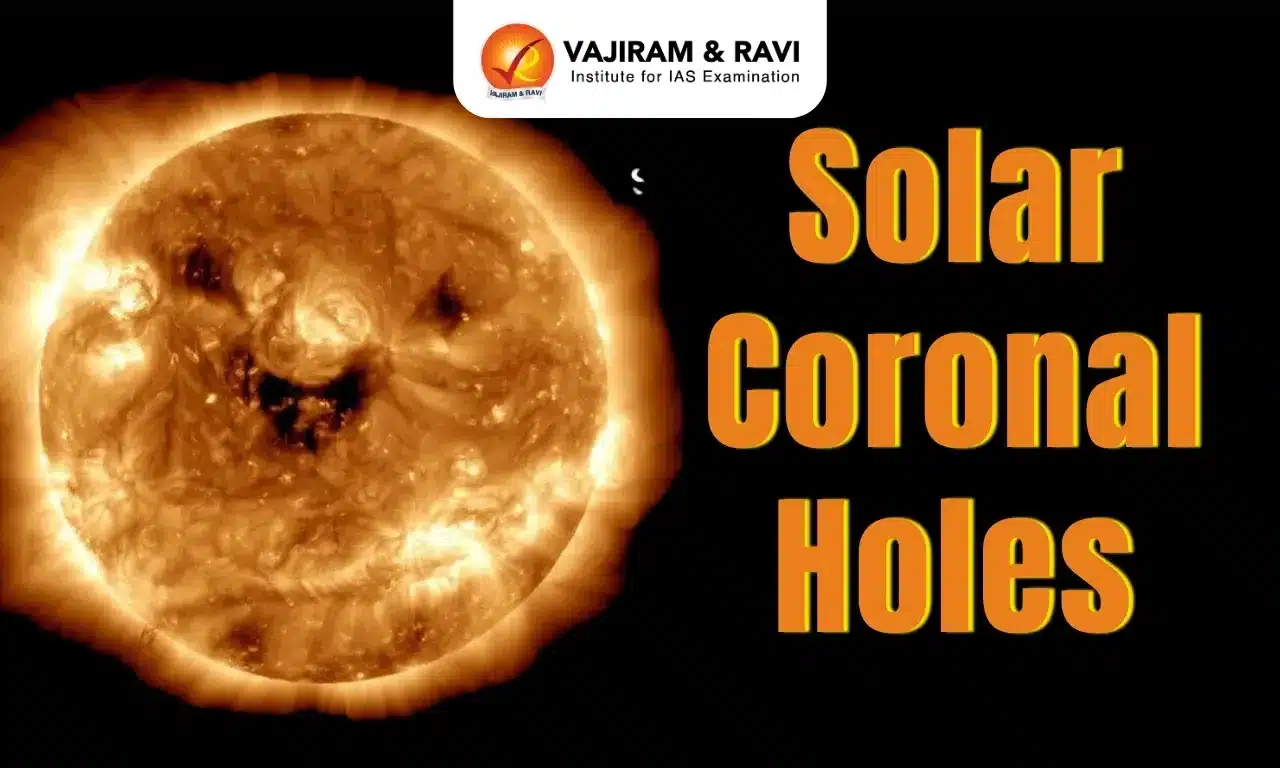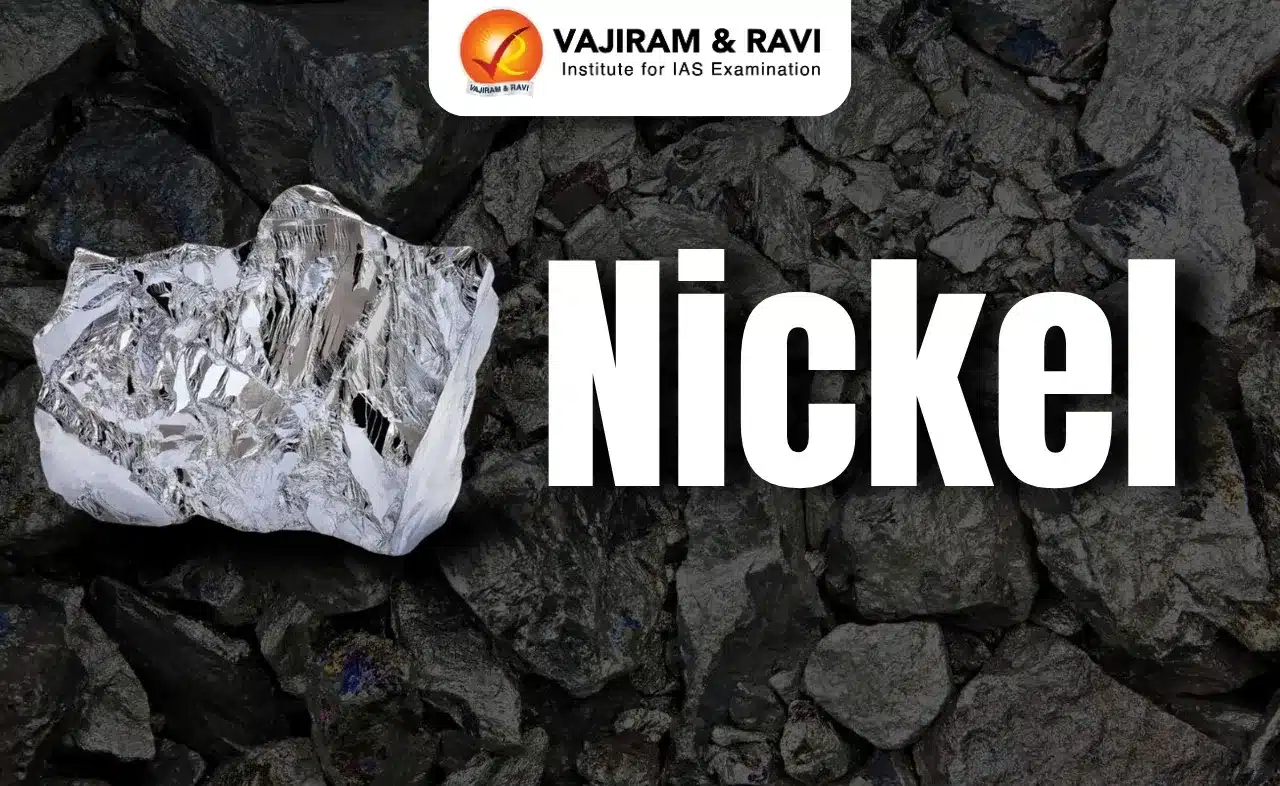Solar Coronal Holes Latest News
Recently, a new study has accurately estimated the physical parameters of thermal and magnetic field structures of solar coronal holes.
About Solar Coronal Holes
- Coronal holes are dark regions in X-ray and extreme ultraviolet images of the Sun.
- These were discovered in the 1970s by X-ray satellites.
Features of Solar Coronal Holes
- They appear dark because they are cooler, less dense regions than the surrounding plasma and are regions of open, unipolar magnetic fields.
- They have open magnetic field lines and are hence important for understanding the interplanetary medium and space weather.
- Coronal holes can last between a few weeks to months. The holes are not a unique phenomenon, appearing throughout the sun’s approximately 11-year solar cycle.
- They can last much longer during solar minimum – a period of time when activity on the Sun is substantially diminished, according to NASA.
Significance of Solar Coronal Holes
- The occurrences of coronal holes are associated with disturbances in the Earth’s ionosphere, the layer of the atmosphere that reflects and modifies the radio waves, leading to further communication issues.
- They have significant influence on space weather that affects satellites, as well as the Indian summer monsoon rainfall.
Solar Coronal Holes FAQs
Q1. What is a solar coronal hole?
Ans. A coronal hole is a large region in the corona which is less dense and is cooler than its surroundings.
Q2. What is ejected from the Sun’s coronal hole?
Ans. Coronal mass ejections (CMEs) are huge bubbles of coronal plasma threaded by intense magnetic field lines that are ejected from the Sun over the course of several hours.
Q3. Why do sunspots appear dark?
Ans. Sunspots are areas that appear dark on the surface of the Sun. They appear dark because they are cooler than other parts of the Sun’s surface.
Source: PIB
Last updated on June, 2025
→ UPSC Notification 2025 was released on 22nd January 2025.
→ UPSC Prelims Result 2025 will be out soon for the CSE held on 25 May 2025.
→ UPSC Prelims Question Paper 2025 and Unofficial Prelims Answer Key 2025 are available now.
→ UPSC Calendar 2026 is released on 15th May, 2025.
→ The UPSC Vacancy 2025 were released 1129, out of which 979 were for UPSC CSE and remaining 150 are for UPSC IFoS.
→ UPSC Mains 2025 will be conducted on 22nd August 2025.
→ UPSC Prelims 2026 will be conducted on 24th May, 2026 & UPSC Mains 2026 will be conducted on 21st August 2026.
→ The UPSC Selection Process is of 3 stages-Prelims, Mains and Interview.
→ UPSC Result 2024 is released with latest UPSC Marksheet 2024. Check Now!
→ UPSC Toppers List 2024 is released now. Shakti Dubey is UPSC AIR 1 2024 Topper.
→ Also check Best IAS Coaching in Delhi






















